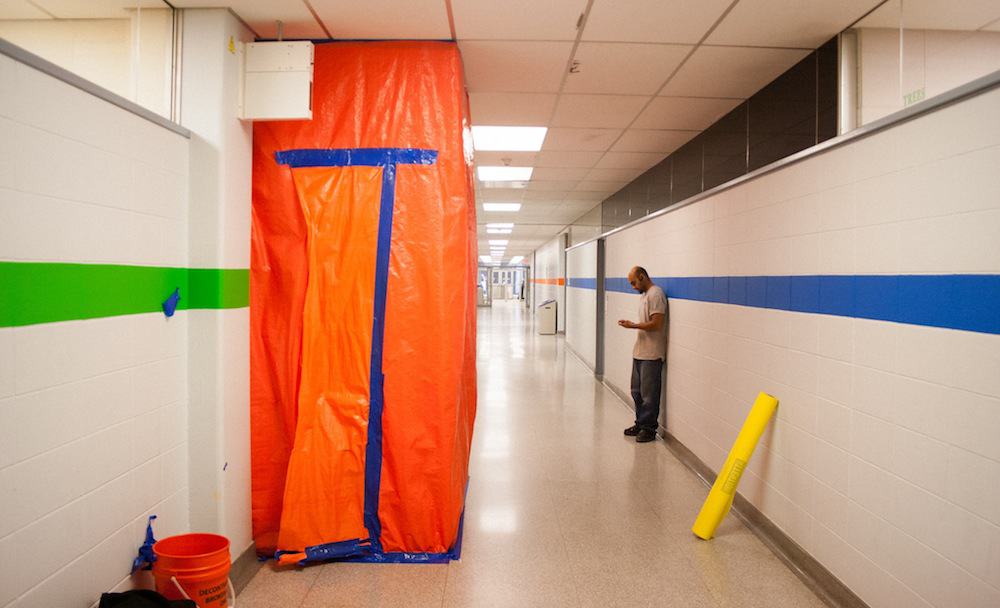On the walls throughout Sidney Smith Hall, one can find triangular yellow stickers marking the presence of asbestos in the ceilings above. Students on the geography- and psychology-dominated ground floor, however, may feel slightly more secure.
An asbestos removal (or “abatement” as it is properly known) began in room 612 on the morning of November 19. “I’m kind of annoyed they didn’t talk to us or give us any warning it was going to happen,” said Marc Acton, president of the U of T Undergraduate Geography Society, which has an office immediately beside the room currently being abated.
He was not alone in this grievance. Three other rooms on the same floor were recently abated (504–506). These rooms were once psychology laboratories and a graduate lounge for students of the psychology department. Students in the neighbouring undergraduate lounge said that they were at no point explicitly told that the process next door entailed asbestos removal.
“We weren’t even approached about removing it in this room,” said Daniel Jubas-Maltz, a psychology undergraduate. The wall of the department’s undergrad lounge sports one of the aforementioned yellow stickers.
Acton remarked that a group of geography graduate students became so upset with the noise caused by the removal work that they approached the workers in room 612 and asked them to continue in a quieter manner.
However, Acton also said that he was confident that the process was perfectly safe. Indeed, the university will not re-open rooms 504–506 until favourable air samples are provided by Pinchin, a third party environmental consulting company.
“Essentially, this is part of a planned renovation and not uncommon in buildings of that age,” said Althea Blackburn-Evans, acting director of News and Media Relations at U of T.
Rooms are completely sealed off during their abatements. Asbestos was commonly used insulation material when many of the older buildings on campus were being built, and is still present in many of them.


